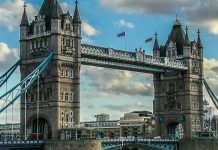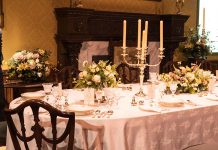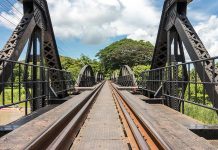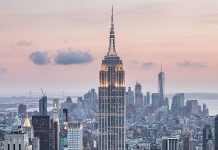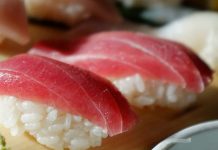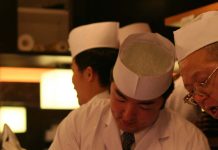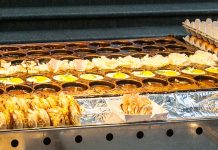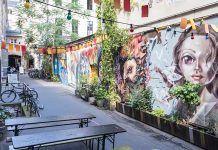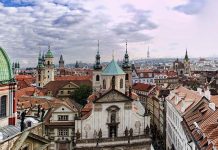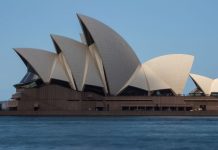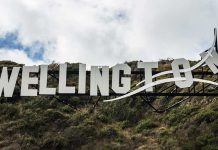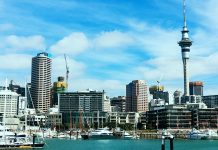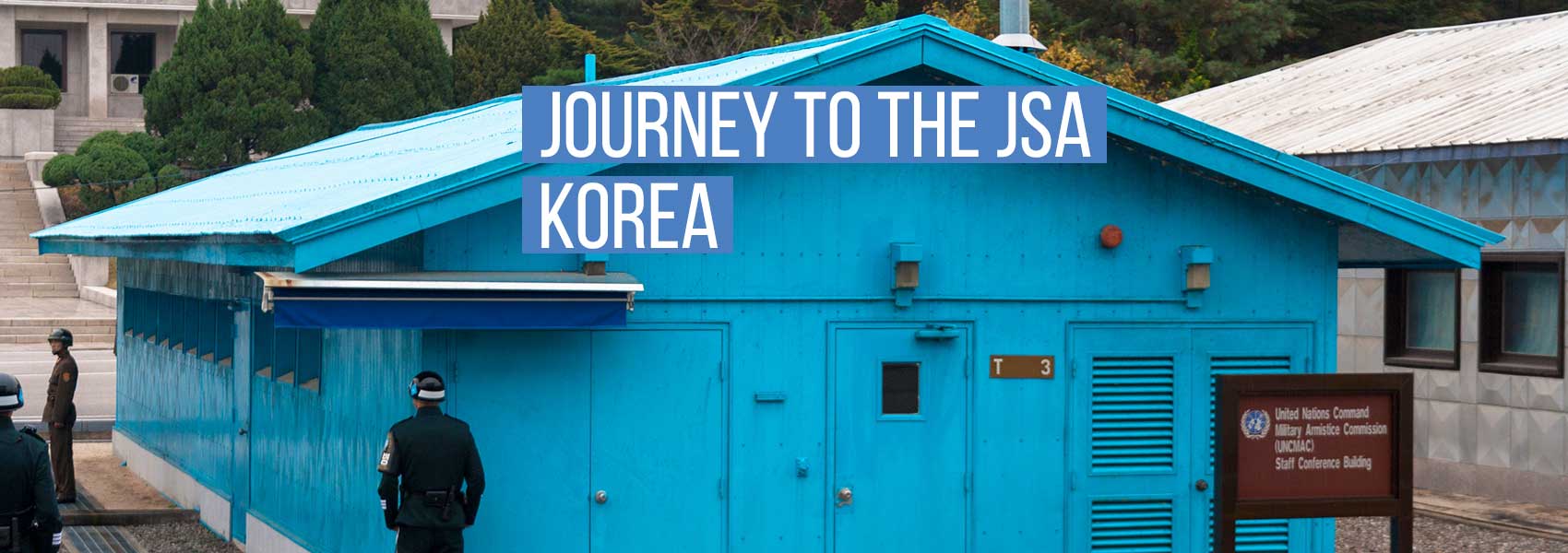If it wasn’t enough to enter the most heavily guarded border zone in the world, we decided to up the ante by crossing the border into North Korea.
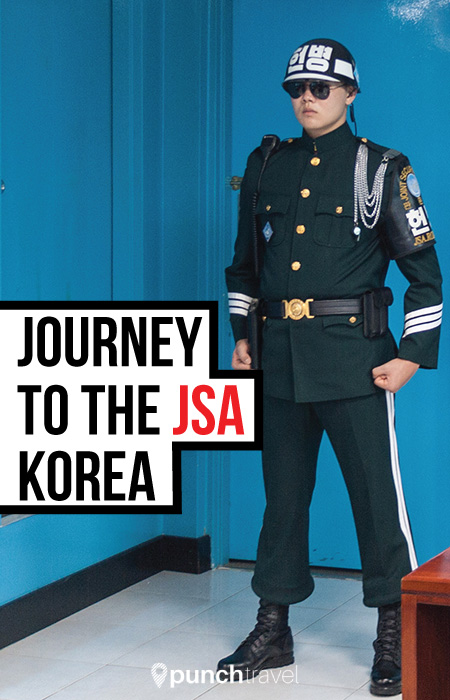
Call us crazy, right??
Don’t worry it’s perfectly safe.
Well kind of. As safe as walking into a Communist country, from a country that is still at war with it, holding a US passport!
But hey, you only live once, right?
Alright, I’m being a bit dramatic. Many visitors visit the Joint Security Area (JSA) where the Military Demarcation Line (DML) between North and South Korea is. Visits are only permitted with a tour group and after submitting passports to the UN.
First a brief history lesson on the JSA
On July 27, 1953, the Armistice Agreement was signed by North Korea and the United Nations Command to put a ceasefire to the Korean War. The signing of this document occurred in the village of Panmunjom, just north of the border. The building still remains and has been renamed by the North as the Peace Museum.
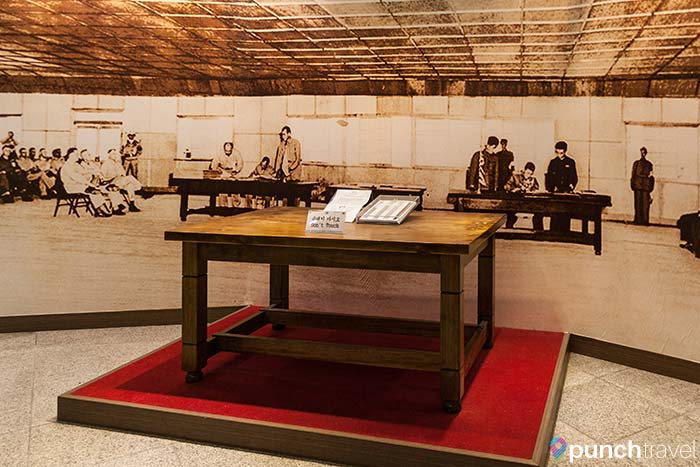
Panmunjom is often used as a metonym for the JSA, where discussions between North and South Korea take place in blue conference buildings built on the MDL. It is the only place in the Demilitarized Zone (DMZ) where North and South Korea stand face to face.
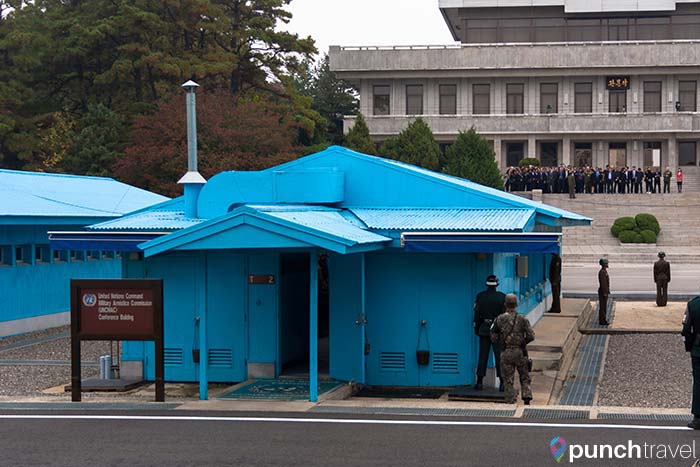
Within the JSA are several buildings including the Freedom House, the famous blue conference buildings, and guard posts. Soldiers, limited by the UN to 30 for each side, patrol the area, but stay on their side of the MDL.
Before You Go
Several tour companies operate tours to the JSA. After doing much research I found that they were equally priced at ₩85,000 which includes transportation from Seoul and lunch. We opted with VIP Travels which operates out of the Koreana Hotel near Gyeongbokgung Palace. VIP Travels is one of the few tours which includes the opportunity to speak to a North Korean defector.
There are strict clothing regulations in order to participate in the tour. You must be dressed respectfully (no torn clothing, no shorts, no flip flops, etc.). This is to not only show respect for the area but also to be prepared in the event that a North Korean soldier takes your photo to use for propaganda.
Interview with a North Korean defector
During the bus ride north, we had the opportunity to speak with a defector, who is considered missing from North Korea. She told us about how and why she defected, the family that she had to leave behind and what life was like in the North.
I asked her what her perception of the outside world had been. What sort of propaganda and misinformation were they told?
She explained us that they had been told that the US was the devil, and that everyone in South Korea were beggars. From a young age, children are brainwashed to believe how great Kim Jong Un is. North Korean movies and pop songs only extol the virtues of the Kims.
She described Pyongyang like Disneyland, where the buildings were only painted on the three sides facing the highway. People selling food on the streets were actually soldiers in disguise. It seemed like everything depicted about North Korea in the cheeky Seth Rogen film, The Interview was true.
It was a sad introduction into the state of affairs in North Korea. This is a place where 3 million people died from starvation under Kim Jong Il. People work in communal farms, but do not get to reap the benefits of the harvest, and most of the time do not earn any money at all.
Odusan Unification Observatory
Our first stop was Mt Odu Observatory, located at a peak overlooking where the Han river meets the Imjin River and the river leading to the Yellow Sea.
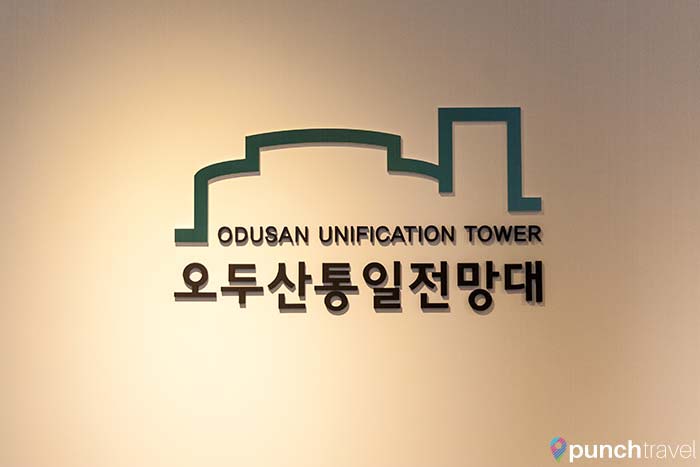
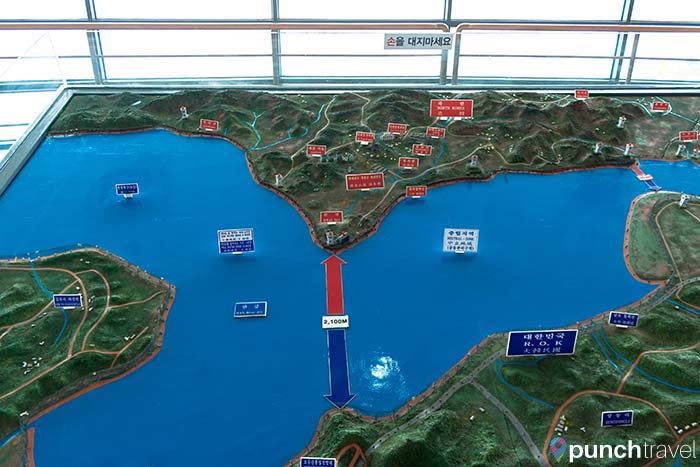
Across the river is North Korea and during low tide, it seems even closer than the 2 kilometers away it actually is. From here, we could look out with binoculars at the propaganda village, the guard posts and the farms. We could even make out some people working in the fields. It was affecting to see people there, being so close to them, but not being able to do anything for them.
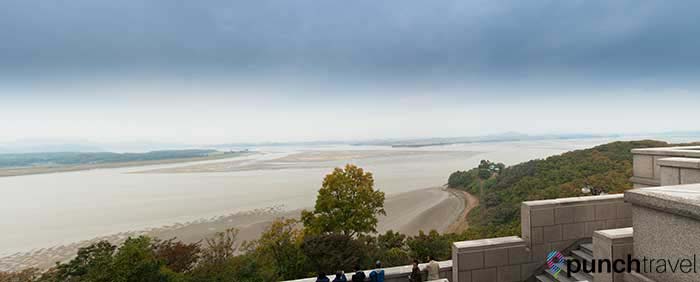
Despite being the same environment as the southern side of the river, North Korea’s land was barren. The forests had all been cut down. North Korea still uses ondol, an archaic form of heating homes that uses direct heat transfer from wood smoke to heat under the floor. The mountain had also been reclaimed for growing rice. Above all the trees had been cut down to better see people trying to escape.
In the JSA: Camp Bonifas and Freedom House
In the afternoon we headed to Camp Bonifas.
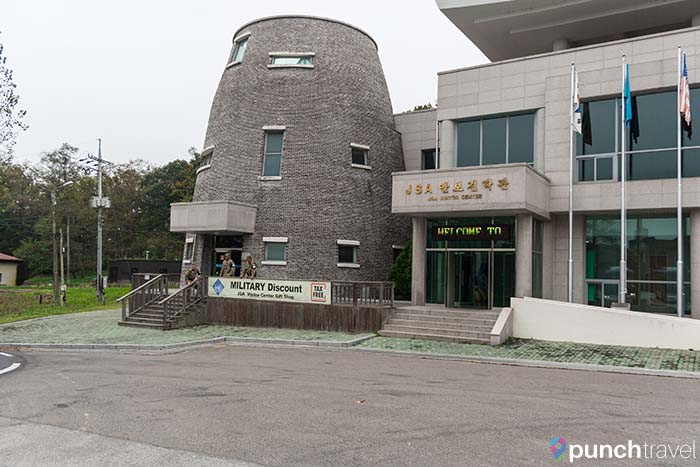
The military post was named after U.S. Army Captain Arthur Bonifas who was killed in the Axe Murder Incident (more about that later). Within the camp are soldier’s barracks, a gift shop and a small museum.
Here we were joined by a United States Forces Officer who would be our security escort in the JSA.
Before we could begin the tour, we had to first sign a disclaimer, acknowledging that we were entering a hostile zone, at risk of being injured or killed. Gulp.
We watched a briefing presentation, donned our new UNCMAC security badges and changed to a UN bus.
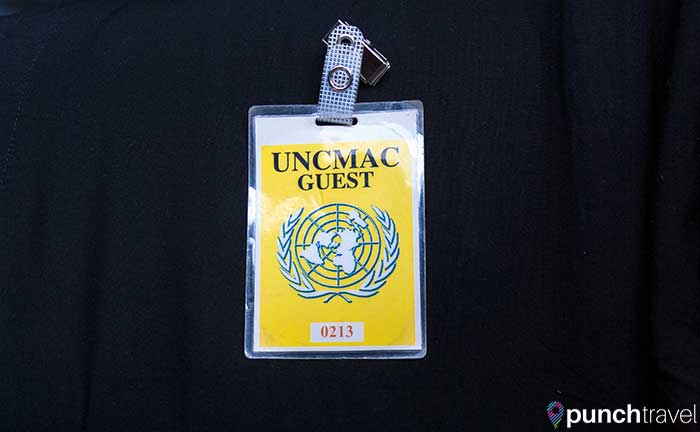
We passed through checkpoint Charlie, the last of the three checkpoints before the MDL.
Until two months ago the JSA tour included a drive by the Taesong Freedom Village and viewing the Bridge of Freedom. It was by this bridge that the famous Axe Murder Incident occurred in 1976. Two American officers were killed while trying to trim a poplar tree that was obstructing their view of the bridge.
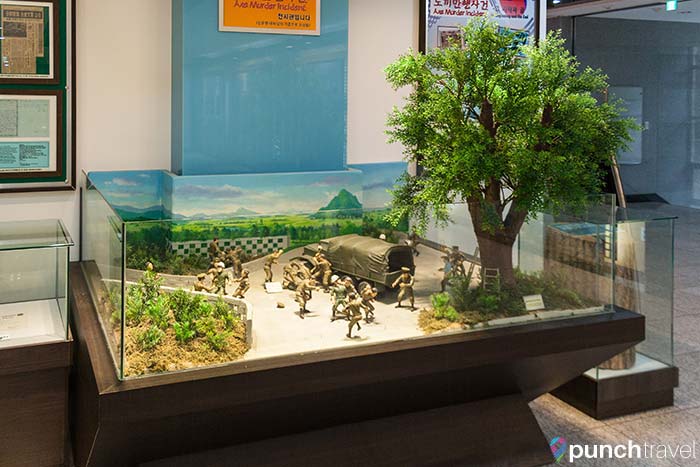
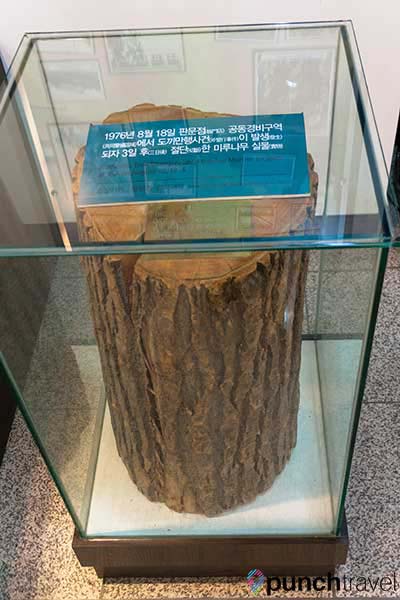
This portion of the tour was discontinued due to the landmines that were planted on the Northern side of the bridge recently. Over 2 million landmines are still buried within the DMZ.
A road that lead from the South to Kaesong Industrial Complex, remained but was out of use. The manufacturing depot financed by South Korea to use North Korean labor to manufacture goods was discontinued because most of the money generated was going directly to Kim Jong Un to fund North Korea’s missile program. From the south, we could see the 160 meter flagpole and 600 pound North Korean flag, one of the largest in the world.
The Freedom House
After a short drive, we reached the Freedom House built to allow families to reunite. However, North Korea never allowed any families to go.
We entered the Freedom House and nervously exited on the other side and were face to face to North Korea.
We lined up at the top of the stairs overlooking the plain blue buildings where meetings take place. In the center were soldiers from the Republic of Korea (ROK) and the Democratic People’s Republic of Korea (DPRK).

Between them was a cement boundary marking the official border between North and South.
The tension was palpable as the two sides squared off, while we civilians anxiously followed the instructions of our security escort. It was really impactful to see the North Korean soldiers immobile at their posts, standing for up to 12 hours at a time.
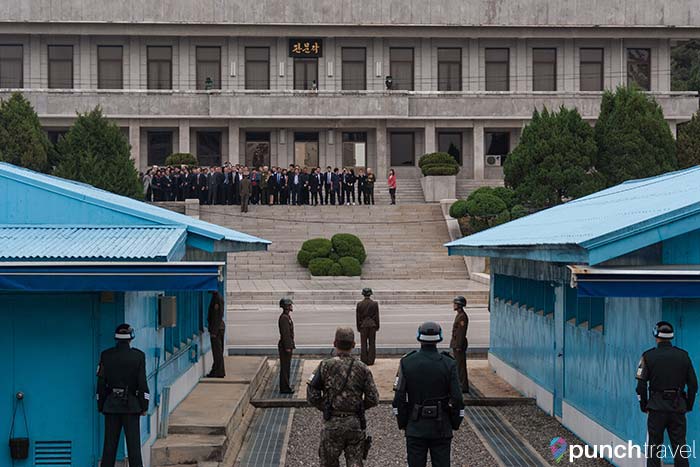
While we listened to our security escort describe the buildings around us, we were permitted to take photographs, so long as we didn’t point or make any gestures towards the North Korean soldiers. Cameras were pointed at us, just as we had cameras pointing at them.
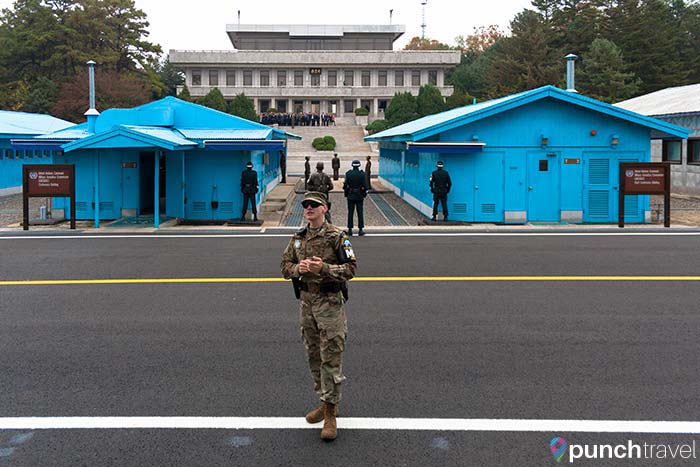
Amazingly, there was also a tour group from the North Korean side, apparently a rare event. The North Korean tours are usually either North Korean officials or occasionally Chinese tourists. I saw a few people in military uniforms, and they all seemed well-dressed. It was amusing to see them taking photos and looking at us, just as we were staring at them.
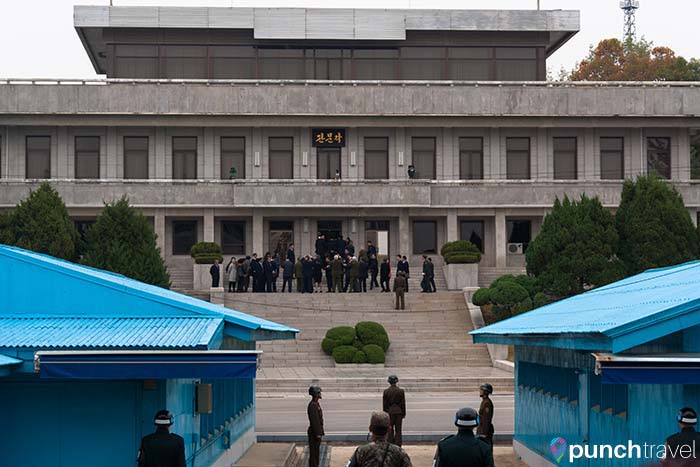
We were then permitted to enter the blue conference building. The room is filled with the meeting tables and chairs.
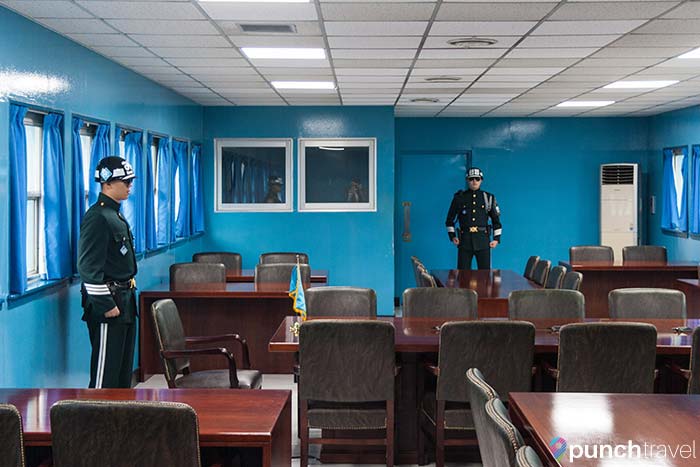
At the table in the center, microphones are placed in the middle, recording everything in the room 24 hours a day, 7 days a week. We crossed to the other side of the table, and just like that we were in North Korea.
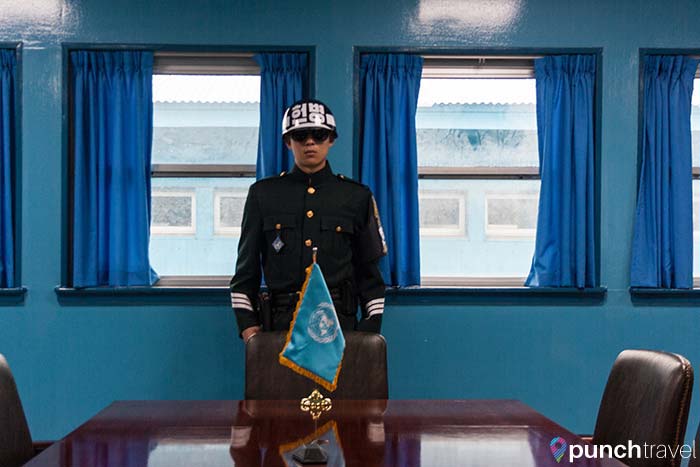
Two ROK soldiers are stationed in the room during the visit. These soldiers must meet a minimum height requirement as well as be a black belt in taekwondo or judo. They wear sunglasses and stand in a modified taekwondo stance in order to intimidate the DPRK soldiers.
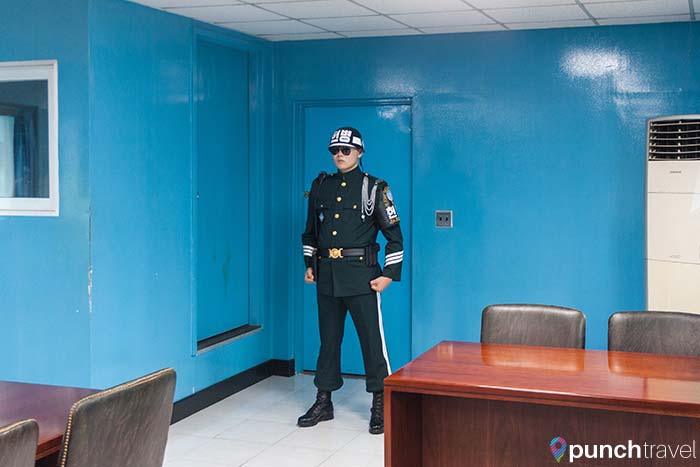
After taking as many photos as we could in the brief time we had, we were ushered back into the relative safety of the Freedom House and back onto the bus.
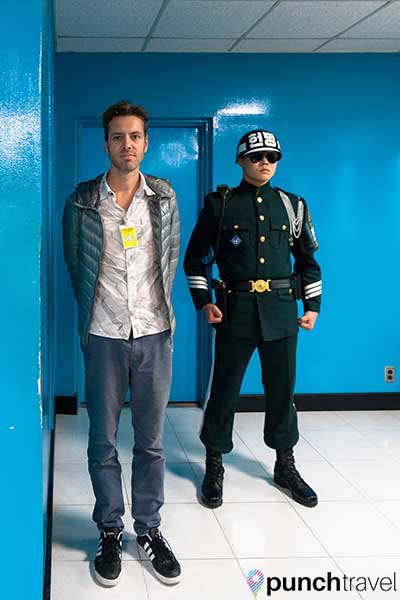
To North Korea, and Back!
Our visit to the Freedom House was on a very tight schedule, but what we were able to see was incredibly moving. It was a unique and impressive experience, and one that I highly recommend for anyone coming to Seoul.
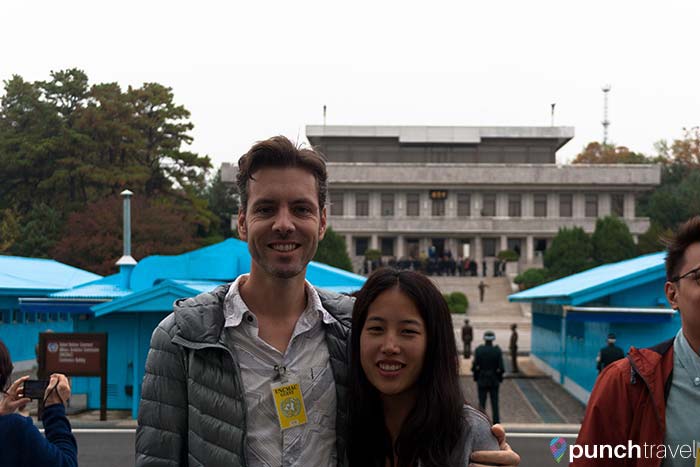
If you are curious about what visiting the JSA from the North Korean side is like, check out this interesting account from Elliott at Earth in a Nutshell.

